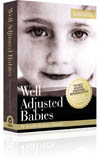 It is at times heartbreaking to hear distressed mother’s describing their colicky babies… I’ll often have mother’s say to me, “My baby doesn’t want to feed, he seems to be in pain and I don’t know what I can do to help him!”
It is at times heartbreaking to hear distressed mother’s describing their colicky babies… I’ll often have mother’s say to me, “My baby doesn’t want to feed, he seems to be in pain and I don’t know what I can do to help him!”
Here’s an older blog on Colic for you all.
What is Colic?
Colic presents as a constantly irritable baby, usually beginning during the first two to three weeks following birth and continuing up to three months of age, sometimes for longer. Unfortunately colic affects up to a third of newborn babies.
What causes Colic?
While there is not one particular known cause for colic – there are many speculated causes and some of these include: gas, constipation, lactose intolerance or food allergies. Another reason for colic may be the result of a structural weakness within the infant’s stomach/diaphragm area.
Treatment within mainstream medicine often includes drug therapy or simply waiting for your baby to outgrow this condition. From a chiropractor’s perspective many of the resulting symptoms of colic may be due to nerve dysfunction, which results in poor communication between the brain and digestive organs.
Does your newborn baby have difficulty breastfeeding, particularly when feeding on one side more than the other? Does he appear uncomfortable when feeding? One simple way for a mother to assess if her newborn has nerve irritation is to compare how they feed from side to side, comparing one breast to the other. Often a baby will feed well off one breast but they will not attach properly on the other side, or a newborn baby may come ‘off’ frequently whilst feeding on one particular breast. These babies genuinely seem to be uncomfortable.
Chiropractic adjustments for the correction of vertebral subluxations (nerve dysfunction) have long been acknowledged as an excellent therapeutic tool for infantile colic. In fact Chiropractic has been shown to have a 94% success rate with Colic.(1)
Ideas that help to Ease the Pain…
Have your baby assessed by a Chiropractor who is confident working with infants.
How well your baby’s spine and nervous system are functioning will play an integral role in the overall health of your child. If you intuitively feel that something is not right with your baby, have them assessed by a Chiropractic doctor. Healthy babies—free of nerve irritation—are happier babies.
 Carrying position and stomach massage:
Carrying position and stomach massage:
on simple…
By carrying your baby across your forearm, stomach down, you are able to elongate the abdominal area which may offer your infant some relief whilst you massage their stomach…Outstretch or extend your right forearm (across your body) and then place your baby face down on top of this same forearm, with their head close to the outer side of your elbow. Place your right hand over their lower abdominal or nappy/groin area. Your baby’s legs will fall either side of your right hand. In this position you should be able to hold the baby entirely with this right arm.
Now with your free left hand gently place your fingers towards the middle of your newborns upper tummy area -just under your baby’s lowest rib. Very gently start to rub your fingers in a downwards motion towards your baby’s belly button.
The intention of this massage is to help relax the stomach. It may help to imagine that with your gentle finger movements you are trying to elongate a small tight ball of play dough into a flat pancake shape.
If you are breastfeeding seek advice on Correct Technique:
If you are breastfeeding, the right advice from a lactation consultant can make the world of difference.
Allow time to burp your baby…
Newborn babies will take a period of time to learn how to correctly feed, burp and digest their food. It is therefore important, in the haste of our day, that we allow our newborns any additional time they may need to burp.
To assist burping- Sit your baby on your lap, place your hand across their chest and lift them up slightly,this lightens the pressure on their abdomen and encourages them to burp. (See page 301 in “Well Adjusted Babies” for an illustration).
How often should you burp a colicky newborn? When bottle feeding, try to burp them after every ounce. If breastfeeding – attempt to burp whenever they come off the breast.
 Cut out all of those ‘trouble foods’.
Cut out all of those ‘trouble foods’.
If you’re breastfeeding and your newborn is suffering with colic, it is imperative for a period of time at least, to steer away from foods known to cause irritation. These include wine, champagne, fizzy drinks, coffee, tea and other caffeinated drinks. Chocolate, acidic fruits such as oranges and berries and heavily spiced foods. Lentils, split peas (pea & ham soup) and secondary proteins such as beans.
Get off the Cow’s Milk!
There is a lot of literature which discusses today’s high incidence of cow’s milk allergies i.e milk protein allergies and lactose intolerance. In fact statistics indicate many of us may unknowingly suffer with these low grade sensitivities. This is a concern for both breastfed and formula fed babies. Please read “Formula’s” Chapter 17 in Well Adjusted Babies for further information and suggestions regarding preferable formulas, and diet elimination for breastfed babies.
Herbal Colic Mixtures
There are a variety of natural herbal colic mixtures available and any of these may be of great benefit. I have heard of positive experiences with “Lardners Herbal Mixture” which is available through some pharmacies or on www.colicsolutions.com
Chiropractic Research and Colic…
Two major studies on ‘Chiropractic and Infantile Colic’ have shown how spinal adjustments may have a positive effect on colic.
One study carried out in 1989(2) was published in the Journal of Manipulative Physiological Therapeutics. In this study, 73 chiropractors adjusted the spines of 316 infants with moderate to severe cases of colic. These babies were averaging 5.2 hours of crying per day. The infants’ mothers were given a diary to record the baby’s symptoms, intensity and length of colicky crying and the level of comfort or discomfort of the infant. Over a period of two weeks (usually three visits), 94% of the infants treated with spinal adjustments showed a successful rating when compared with the other group of babies. One fourth of these showed improvement after the first adjustment. The other group of babies, who were medicated using Dimethicone drops, improved by only 38%.
Again in 1999(3), researchers compared their new results with this previous trial and the results of the two studies were virtually identical.
Resources:
(2)Klougant N. Nilsson N. Jacobsen J. Infantile Colic Treated by Chiropractors; a Prospective Study of 316 Cases. JMPT. 1989;12:281-288.
(3) Jesper. et al. The Short Term Effect of Spinal Manipulation in the Treatment of Infantile Colic: A Randomized Controlled Trial with a Blinded Observer. JMPT. 1999;22;517-522.
 By implementing these suggestions I hope they may offer your newborn effective relief from colic so these first few months of bonding can be transformed into a beautiful and peaceful time for you both.
By implementing these suggestions I hope they may offer your newborn effective relief from colic so these first few months of bonding can be transformed into a beautiful and peaceful time for you both.
Click here to Purchase the Well Adjusted Babies book!
For more advice and information…
Take a look at Well Adjusted Babies — offering much more information about relieving colic (Chapter 18), as well as many other useful chapters, such as “Breastfeeding” (Chapter 16) and “Formulas” (Chapter 17)…






